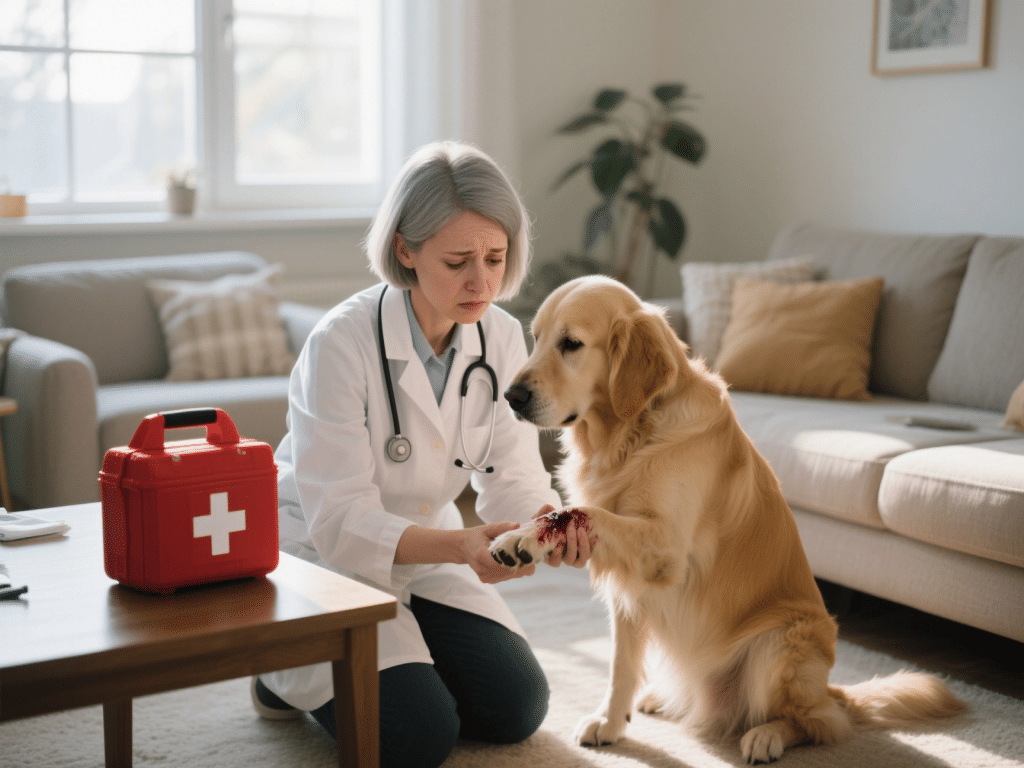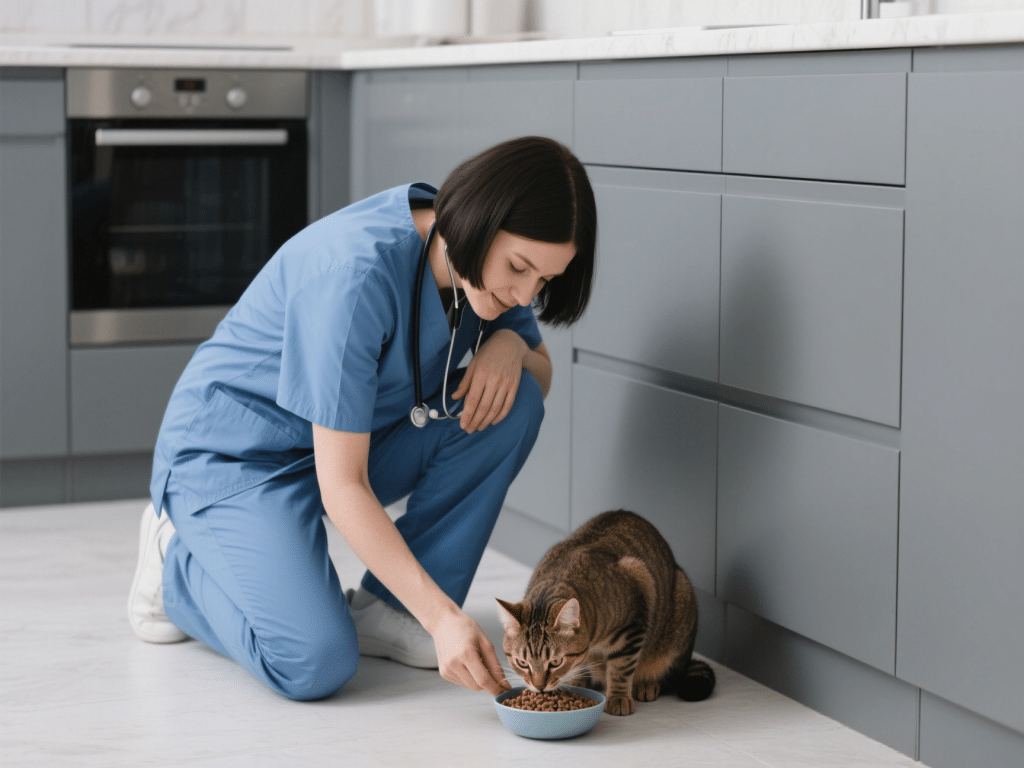How to Recognize and Treat Common Pet Injuries: Essential First Aid for Dog and Cat Owners
Accidents happen, and knowing how to respond to common pet injuries can mean the difference between a quick recovery and a life-threatening emergency. As responsible pet owners, recognizing subtle signs of distress and administering appropriate first aid is crucial before veterinary care is available. Here’s a professional guide:
1. Cuts, Scratches & Abrasions (Lacerations)
Recognition: Visible bleeding (ranging from minor oozing to heavy flow), matted fur, limping, excessive licking at a specific area, pain reaction when touched. Check for embedded debris.
Immediate Treatment:
Control Bleeding: Apply firm, direct pressure using sterile gauze or a clean cloth for 3-5 minutes. Elevate the limb if possible (if no fracture suspected).
Clean Gently: Once bleeding stops, flush minor wounds with lukewarm saline solution (1 tsp salt per pint of boiled then cooled water) or clean water to remove debris. Avoid hydrogen peroxide or alcohol, which damage tissue.
Protect: Apply a thin layer of veterinary-approved antibacterial ointment and cover with a sterile non-stick pad. Secure loosely with vet wrap (avoid tight bandages). Never use human painkillers like ibuprofen or acetaminophen – they are toxic.
Vet ER When: Heavy bleeding doesn’t stop after 5-10 mins of pressure, deep puncture wounds (especially from bites), wounds near eyes/mouth/genitals, signs of infection (swelling, redness, pus, heat).
2. Limping & Suspected Fractures/Sprains
Recognition: Inability or extreme reluctance to bear weight on a limb, swelling, unnatural limb angle, vocalizing in pain when moving or touched, reluctance to move.
Immediate Treatment:
Restrict Movement: Confine your pet immediately to a small area (crate or small room) to prevent further injury. Do not attempt to splint the limb unless absolutely necessary for transport and you are trained. Improper splinting causes more harm.
Cold Compress: Apply an ice pack wrapped in a thin towel to the swollen area for 10-15 minutes to reduce inflammation, if tolerated.
Support: For larger dogs, use a towel slung under the belly as a makeshift harness to help them walk minimally if essential.
Vet ER When: Any obvious deformity, open wound near the limb, inability to use the limb at all, or severe pain. Spinal injury suspected (paralysis, loss of bladder control) requires absolute immobility and urgent transport.
3. Burns (Thermal or Chemical)
Recognition: Singed fur, red/raw skin, blisters (later stages), intense pain, vocalization, hiding. Chemical burns may show drooling (if licked) or pawing at face.
Immediate Treatment:
Cool Immediately: Flush thermal burns with copious amounts of cool (not ice-cold) running water for 10 minutes. For chemical burns, flush the affected area continuously for 15-20 minutes with water (wear gloves if handling chemicals). Remove contaminated collars.
Cover Lightly: After cooling, cover the area loosely with a sterile, non-stick dressing or clean damp cloth.
Prevent Licking: Use an Elizabethan collar (cone) to prevent self-trauma.
Vet ER When: All burns, especially chemical burns, electrical burns, or those covering a significant area. Burns are extremely painful and prone to severe infection.
4. Bleeding (Internal or Severe External)
Recognition (Internal): Pale or white gums, rapid weak pulse, cold extremities, labored breathing, coughing/vomiting blood, collapse, distended abdomen. Internal bleeding is a dire emergency.
Recognition (Severe External): Uncontrolled arterial bleeding (bright red, spurting), large wounds.
Immediate Treatment:
External: Apply direct, firm pressure with multiple layers of gauze/cloth. Maintain pressure. Use a pressure bandage if possible and trained. Tourniquets are a LAST RESORT only for life-threatening limb hemorrhage and require precise application/timing.
Internal/Suspected Internal: Go to the ER IMMEDIATELY. Keep your pet as calm and still as possible. Cover with a blanket for warmth if shivering/shocky.
Vet ER When: Any suspected internal bleeding or uncontrolled severe external bleeding. Time is critical.
5. Shock
Recognition: Often follows severe injury, blood loss, or trauma. Signs include rapid shallow breathing, very pale or grey gums, weak rapid pulse, cold legs/ears, lethargy/depression, unresponsiveness, glassy eyes.
Immediate Treatment:
Prioritize ER: Shock is life-threatening. Transport to the vet immediately.
Minimal Handling: Keep the pet quiet, warm (cover with a blanket), and flat. Avoid unnecessary movement.
Airway: Ensure the airway is clear.
Vet ER When: Any signs of shock require immediate, urgent veterinary attention.
Critical First Aid Kit Essentials
Sterile gauze pads & rolls
Self-adhering bandage (Vet Wrap)
Adhesive tape (for securing bandages, NOT fur)
Blunt-ended scissors
Tweezers (for debris removal)
Digital thermometer (pet-specific)
Saline solution (eye wash/irrigation)
Antibacterial ointment (veterinary)
Elizabethan collar (cone)
Muzzle (injured pets may bite out of fear/pain - ensure they can breathe easily)
Emergency vet contact numbers (regular & 24hr)
The Golden Rule: When in Doubt, Seek Veterinary Care
First aid is not a substitute for professional veterinary medicine. Its purpose is to stabilize your pet and prevent further harm en route to the veterinarian. Always contact your vet or an emergency clinic immediately after administering first aid or if you are unsure of the severity. Describe the injury and the first aid given clearly. Early professional intervention significantly improves outcomes.
Proactive Steps:
Save Emergency Numbers: Program your regular vet and the nearest 24-hour emergency clinic numbers into your phone.
Take a Pet First Aid Course: Hands-on training from organizations like the Red Cross or American Animal Hospital Association (AAHA) is invaluable.
Know Your Pet’s Baseline: Regularly check gums (should be pink), pulse, and respiration rate at rest so you recognize abnormalities.
Prevention: Pet-proof your home, use secure fencing, leash walk, and supervise outdoor activities.
By recognizing the signs of common injuries and knowing how to respond calmly and effectively, you can be your pet’s best first responder in a crisis.










Comments on "How to Recognize and Treat Common Pet Injuries" :